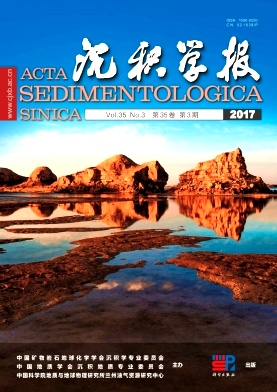Lithofacies Paleogeography Research on Ordovician Majiagou 54 Sub-member in the West Jingbian Platform
doi: 10.14027/j.cnki.cjxb.2017.03.011
- Received Date: 2016-09-07
- Rev Recd Date: 2016-10-20
- Publish Date: 2017-06-10
-
Key words:
- Ordos Basin /
- Majiagou54 sub-member /
- lithofacies paleogeography /
- spherical anhydrite concretion /
- depression
Abstract: The fourth sub-member, the fifth Member, Majiagou Formation (hereinafter referred to as Ma54) of Middle Ordovician is the important gas exploration layer in Ordos Basin, but many lithofacies paleogeographic maps about this layer are based on member or sub-member unit and is with a basin scale, and their resolution is far away from the requirement of gas exploration and development. In this paper, according to paleogeomorphology, anhydrite or gypsum type and its paleoenvironment significance, lithofacies paleogeography will be mapped in the Ma54 divided into Ma543, Ma542 and Ma541 in west Jingbian platform, which fills the gap of lacking high-resolution maps. On the base of sedimentary setting and stratum thickness contour diagram, the thick and slightly steep area in the center is interpreted as depression, and the thin and gentle area around the depression is interpreted as flat. There are massive anhydrite, spherical anhydrite concretion and gypsum crystal in Ma54. Massive anhydrite interbeded with dark muddy algae laminar dolomite represents a shallow and subaqueous evaporative environment which is located in supratidal zone and is sometimes flooded by tide water. Spherical anhydrite concretions, which are dispersed in light yellow micritic and slit-sized crystal dolostone, are formed during penecontemporaneous stage and indicate an evaporative and oxidizing environment with variational salinity. Comparison with the two types of anhydrite, gypsum crystals are not very common, and most of them show a columnar shape. Some crystals associate with spherical anhydrite concretion, so their environment is the same as spherical anhydrite concretion's. Massive anhydrite is distributed in the depression, so the lithofacies paleogeographic name is called anhydrite depression. According to the content of massive anhydrite, anhydrite depression is divided into massive anhydritic dolomite depression, massive anhydrite dolomite depression and dolomitic massive anhydrite depression. Spherical anhydrite concretion and gypsum crystal are mainly distributed in flat. Combined their distribution and sedimentary setting of restricted evaporative supratidal zone, they are called spherical anhydrite concretion dolomite tidal flat. The basic lithofacies paleogeographies of Ma543, Ma542 and Ma541 are almost the same, but from Ma543 to Ma542 and then Ma541, the anhydrite depression becomes smaller and smaller, and the content of massive anhydrite decreases gradually, which shows the process that supratidal evaporative water becomes shallower and shallower. This paper makes some relative high-resolution lithofacies paleogeographic maps, which is very helpful to the gas exploration and development in Lower Paleozoic in Ordos Basin.
| Citation: | HU GuangMing, LI GuoDong, WEI XinShan, LI YanBing. Lithofacies Paleogeography Research on Ordovician Majiagou 54 Sub-member in the West Jingbian Platform[J]. Acta Sedimentologica Sinica, 2017, 35(3): 527-539. doi: 10.14027/j.cnki.cjxb.2017.03.011 |






 DownLoad:
DownLoad: